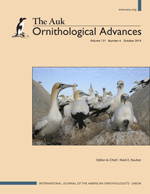In many species, individuals benefit from social associations, but they must balance these benefits with the costs of competition for resources. Understanding how these competing factors generate diversity in social systems is a major goal of behavioral ecology, but one that has been hampered by a lack of basic data quantifying many aspects of social structure and associations. Although parrots are generally assumed to have complex social groups, few studies have quantitatively examined these assumptions about parrot social structure. We critically assessed 4 assumptions about parrot socioecology using data from captive and wild groups of Monk Parakeets (Myiopsitta monachus). We evaluated (1) whether pairs are the fundamental unit of parrot social structure, (2) the patterns and extent of fission–fusion dynamics, (3) patterns of aggression and dominance hierarchy structure, and (4) whether individuals share foraging information. We found evidence that supported pairs as the fundamental unit of social structure, although these close associates were not always heterosexual breeding pairs and were sometimes trios. Fission and fusion of subgroups were common, and the amount of fission–fusion dynamics varied across flock types and by fission–fusion dimension, but the amount of variation among dimensions was consistent across replicate captive social groups. Despite these levels of fission–fusion dynamics, study of aggressive interactions in our 2 captive groups indicated that dominance hierarchies existed. Hierarchies were moderately linear (0.7) but not steep (<0.1). Finally, we found no evidence that Monk Parakeets share foraging information among groups through active vocal recruitment to foraging flocks. We compared these patterns with those documented for other species of parrots and other cognitively complex large-brained species. We consider the implications of our results for the study of the evolution of complex sociality and highlight several future directions for parrot socioecology research.
How to translate text using browser tools
17 September 2014
The socioecology of Monk Parakeets: Insights into parrot social complexity
Elizabeth A. Hobson,
Michael L. Avery,
Timothy F. Wright

The Auk
Vol. 131 • No. 4
October 2014
Vol. 131 • No. 4
October 2014
aggression
dominance hierarchy
fission–fusion dynamics
Myiopsitta monachus
parrot
social complexity
social network analysis




